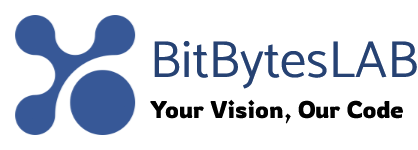Have you ever watched a retailer’s prices change faster than you can say “checkout” and wondered how they keep up? In 2025, the answer is no longer a magic crystal ball but a well‑engineered web‑scraping stack that turns raw online chatter into actionable insights. As someone who’s spent years chasing price drops across thousands of product pages, I’ve learned that the right tools can make the difference between a data‑driven strategy and a guessing game.
Picture this: you’re managing a mid‑size e‑commerce brand, and your competitors just launched a flash sale. You need to know the exact discount, product availability, and user sentiment in real time—no more manual spreadsheet gymnastics. That’s the problem we’re solving: turning the chaos of the web into clean, structured data that feeds dashboards, forecasting models, and automated pricing engines.
At the core, there are three pillars every retailer‑scraping strategy must address: visibility (can you see the data you need?), velocity (how fast can you capture it?), and compliance (are you staying within legal and ethical boundaries?). Navigating these pillars requires a blend of thoughtful architecture, smart technology choices, and rigorous governance.
When I first dove into web scraping, I underestimated the importance of the “human factor.” Even the most sophisticated tools can falter if they’re not guided by a clear business hypothesis. That’s why every project starts with a data‑governance playbook: define key metrics, set success criteria, and map out the data lineage from source to insight.
In practice, the process looks like this: you prototype a small, reusable scraper, validate it against a handful of pages, then iterate to handle pagination, infinite scroll, and JavaScript rendering. Once the logic is iron‑clad, you scale it via container orchestration or serverless functions, and finally feed the structured output into your analytics stack—be it Snowflake, BigQuery, or a custom PostgreSQL schema.
But let’s pause for a light moment before we dive deeper.
🚀 Why did the developer go broke? Because he used up all his cache! 💸

Now that we’ve warmed up, let’s talk strategy. The 2025 market demands a hybrid approach: combine the speed of headless browsers with the scalability of async HTTP clients. Think of it as a “speed‑boat with a sturdy hull.” For pages that load data via API calls, a lightweight `aiohttp` request is all you need. For single‑page applications built with React or Vue, Playwright or Selenium can render the content before extraction.
Another secret sauce is “smart throttling.” Instead of a static 1‑second pause, implement an adaptive delay that reacts to response times, error rates, and IP reputation. Pair this with proxy rotation—residential or data‑center—so you’re never flagged as a bot. And for sites that love CAPTCHAs, a tiered solution that calls a 2‑captcha API only when needed keeps your scraper green.
From a governance perspective, automate compliance checks. A simple `robots.txt` parser runs before every run, and a logging layer captures every request header and response code. This data feeds into a compliance dashboard where you can audit that you’re not accidentally scraping restricted content.
Industry studies show that retailers using real‑time price and inventory data can reduce markdowns by up to 12% and increase margin by 3–5% annually. In 2024, Amazon’s dynamic pricing engine reportedly captured an extra 2% of revenue from products that were previously underpriced. That’s a number worth chasing.
Yet the road is not without bumps. Common challenges include frequent HTML structure changes, aggressive anti‑bot measures, and the sheer volume of data that can overwhelm storage solutions. Here’s where experience sharpens your edge:
HTML churn: Build selector fallbacks and unit tests that flag broken parsers immediately.
Bot detection: Rotate user‑agents, employ headless browsers with “stealth” plugins, and keep an eye on error patterns that hint at a site’s security posture.
Data volume: Stream data directly into columnar formats like Parquet or push to Kafka for downstream processing, rather than loading everything into RAM.
Looking ahead, 2025 is shaping up to be the year of AI‑assisted scraping. Models can now infer page layouts from screenshots, reducing the need for brittle CSS selectors. Vision‑based scraping is becoming viable for mobile storefronts where “price tags” are often embedded in images. And low‑code platforms are gaining traction, letting product managers prototype scraping workflows without touching code.
But there’s a balance to strike. Automation is powerful, but you still need a human mind to set the business hypothesis, interpret anomalies, and adjust the scrape when the market shifts. Think of the scraper as a sophisticated data collector, not a silver bullet.
To wrap up, here’s a quick sanity check before you roll out your next scraper:
- Did you define the KPI and success metrics up front?
- Is your pipeline modular and testable?
- Do you have a governance and compliance layer in place?
- Is your architecture scalable and cost‑aware?
When you ask these questions, you’re not just building a scraper—you’re architecting a data‑driven advantage that can keep your brand ahead of price wars, inventory shortages, and consumer sentiment swings.
⚡ A SQL query goes into a bar, walks up to two tables and asks… ‘Can I join you?’ 🍺

In the end, the smartest retailers are those that can turn the endless tide of web data into a crystal‑clear view of market conditions. Armed with the right mix of tools—Scrapy for speed, Playwright for resilience, and a dash of AI for future‑proofing—you can automate price monitoring, track competitor launches, and even predict demand surges long before your ad spend spikes.
Need help turning these concepts into a production‑ready scraper? At BitBytesLab, we specialize in building customized web‑scraping solutions that blend best‑in‑class technology with rigorous compliance. Let’s chat and turn your retail analytics dreams into a data‑driven reality. 🚀





